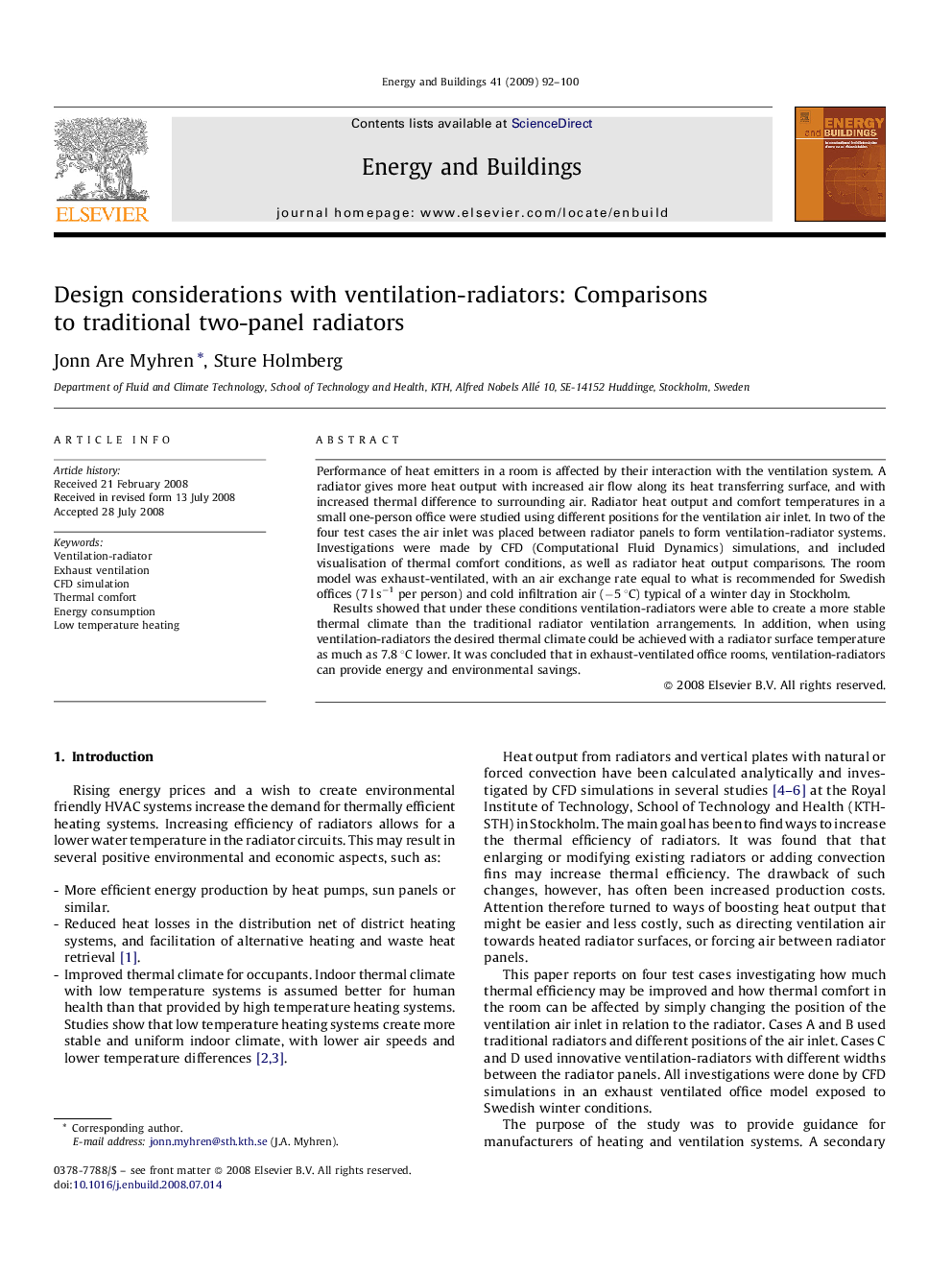| Article ID | Journal | Published Year | Pages | File Type |
|---|---|---|---|---|
| 265410 | Energy and Buildings | 2009 | 9 Pages |
Performance of heat emitters in a room is affected by their interaction with the ventilation system. A radiator gives more heat output with increased air flow along its heat transferring surface, and with increased thermal difference to surrounding air. Radiator heat output and comfort temperatures in a small one-person office were studied using different positions for the ventilation air inlet. In two of the four test cases the air inlet was placed between radiator panels to form ventilation-radiator systems. Investigations were made by CFD (Computational Fluid Dynamics) simulations, and included visualisation of thermal comfort conditions, as well as radiator heat output comparisons. The room model was exhaust-ventilated, with an air exchange rate equal to what is recommended for Swedish offices (7 l s−1 per person) and cold infiltration air (−5 °C) typical of a winter day in Stockholm.Results showed that under these conditions ventilation-radiators were able to create a more stable thermal climate than the traditional radiator ventilation arrangements. In addition, when using ventilation-radiators the desired thermal climate could be achieved with a radiator surface temperature as much as 7.8 °C lower. It was concluded that in exhaust-ventilated office rooms, ventilation-radiators can provide energy and environmental savings.
